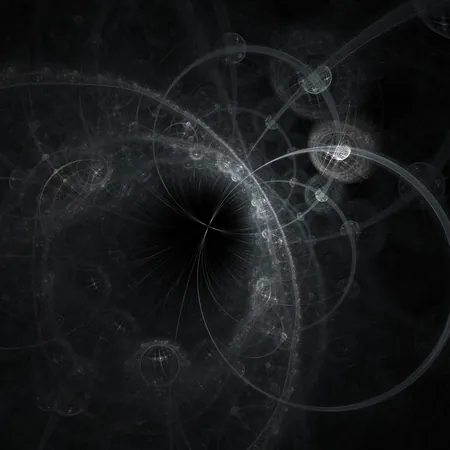
First-Ever Observation of Ultra-Rare Particle Decay Sparks Hopes for New Physics!
2024-09-24
First-Ever Observation of Ultra-Rare Particle Decay Sparks Hopes for New Physics!
Scientists at CERN have made a groundbreaking discovery by observing an ultra-rare particle decay process that could pave the way for new physics beyond our current understanding of matter. This significant milestone was achieved by the NA62 collaboration, which recently revealed the first experimental observation of the decaying charged kaon into a charged pion and a neutrino-antineutrino pair (K+ → π+νν̄).
This particular decay is incredibly scarce, with the Standard Model (SM) of particle physics predicting that fewer than one out of every ten billion kaons will decay in this manner. The NA62 experiment was meticulously designed and constructed specifically to measure this elusive kaon decay.
Cristina Lazzeroni, a Professor of Particle Physics at the University of Birmingham, expressed her excitement, stating, "With this measurement, K+ → π+νν̄ becomes the rarest decay established at discovery level—achieving the renowned 5 sigma level. This challenging analysis is a testament to excellent teamwork, and I take great pride in this achievement."
Kaons are produced when a high-intensity proton beam from the CERN Super Proton Synchrotron (SPS) collides with a stationary target, resulting in a secondary particle beam generating nearly a billion particles per second. Among these, approximately 6% are charged kaons. The NA62 detector is instrumental in identifying and measuring each kaon and its decay products, while the neutrinos appear as missing energy due to their elusive nature.
Professor Giuseppe Ruggiero from the University of Florence highlighted the long journey to this discovery, stating, "This marks the culmination of a project that began over a decade ago. Investigating events with probabilities as low as 10–11 is both fascinating and challenging. After rigorous work, we are thrilled to see our efforts rewarded with this long-awaited result."
The recent findings are based on a combination of data collected by the NA62 experiment during 2021-22 and earlier results from 2016-18. The data collected during the more recent period benefited from significant upgrades to the NA62 setup, which allowed operation at 30% higher beam intensity along with several new and improved detection tools.
These hardware upgrades, along with advanced analytical techniques, facilitated the collection of signal candidates at a 50% higher rate while enhancing background suppression methods.
A team from the University of Birmingham, led by Professor Evgueni Goudzovski, has been integral to the NA62 experiment since its inception in 2007. Professor Goudzovski remarked, "Attracting top talent and providing leadership opportunities to early-career researchers are our top priorities. We are proud that both the current NA62 physics coordinator and the convener of the K+ → π+νν̄ measurement are former Ph.D. students from Birmingham. It’s a privilege to lead such a dynamic and productive group."
The research team is particularly interested in the K+ → π+νν̄ decay because it is exceptionally sensitive to new physics phenomena that extend beyond the Standard Model. Current results indicate that about 13 kaons in 100 billion transform into a pion and two neutrinos, aligning with SM predictions but showing a 50% increase in occurrence—hinting at the possibility of new particles enhancing this decay's likelihood.
While these preliminary findings are promising, scientists stress that additional data is required to confirm or rule out the presence of new physics in this decay process. The NA62 experiment is actively collecting more data, and researchers are hopeful of unveiling deeper secrets of the universe within the next few years.
This extraordinary discovery at CERN ignites curiosity and speculation in the scientific community, leaving the question open: what other mysteries of the universe lie hidden, waiting to be unraveled?

 Brasil (PT)
Brasil (PT)
 Canada (EN)
Canada (EN)
 Chile (ES)
Chile (ES)
 España (ES)
España (ES)
 France (FR)
France (FR)
 Hong Kong (EN)
Hong Kong (EN)
 Italia (IT)
Italia (IT)
 日本 (JA)
日本 (JA)
 Magyarország (HU)
Magyarország (HU)
 Norge (NO)
Norge (NO)
 Polska (PL)
Polska (PL)
 Schweiz (DE)
Schweiz (DE)
 Singapore (EN)
Singapore (EN)
 Sverige (SV)
Sverige (SV)
 Suomi (FI)
Suomi (FI)
 Türkiye (TR)
Türkiye (TR)